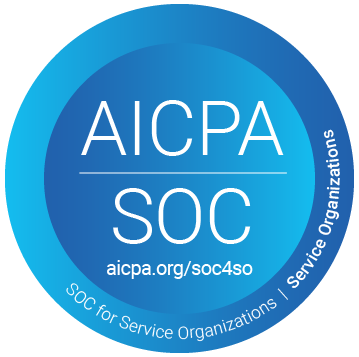The Top Four Types of Construction Claims and How to Effectively Prevent Them
Construction claims are a hassle and can lead to a lengthy litigation process, or worse, bankruptcy.
The reality is that construction projects are complex, fast-paced, and involve many subcontractors and third parties. This creates many instances in which an insurance claim can arise.
So, how do you avoid construction claims? Let’s jump in and review some of the most common types of construction claims. After that, we will review real-world data on industry disputes and how your company can avoid them.
Top Four Types of Construction Claims
There are four main types of construction claims that contractors often see take place during a construction project.
1. Construction Delay Claims
Delay claims arise when unforeseen circumstances push a project past the initial agreed-upon deadline. Consequently, this disrupts the intended schedule. There are lots of causes for delays. These include defective plans or permit approvals to factors beyond our control, such as weather. These claims lead to financial or productivity loss on the client’s side. Although you do not always have control over these situations, they can cause expensive insurance claims and litigation for your company.
2. Damage Claims
If a contractor causes any damage to the property while completing the project, the client may hold them liable for this damage by filing a damage claim. If a subcontractor causes damage, you might be responsible for the damage if they don’t have insurance coverage.
3. Price Acceleration Claims
Price acceleration claims occur when the expected project budget increases to complete the job on time or early. The client is the one to file the claim since they’re the ones who carry the costs of the expedited work.
4. Differing Site Conditions Claims
When the actual condition of the project site differs from what the client conveyed in the contract, a different site conditions claim could arise. For example, if the client said the job site is grass and the contractor shows up to a sandpit. In this case, it’s going to be more expensive to build the foundation on the sand. When this happens, the general contractor will file the claim.
These are the top four and most common construction claims that companies in the United States face. Now that we have talked about the most common claims, let’s look at some other claims to be aware of.
Other Claims You Will Face
As a contractor, prevention is key to avoiding this lengthy insurance process. To help you prepare, we have also explained the less common insurance claims that you may deal with during a construction project:
- Subcontractors not completing their work to a reasonable standard as stated in the contract.
- Construction defects (I.e., a problem in the design, workmanship, and/or materials used on a project).
- Builder’s risk claims involve claims of fires and explosions, natural disasters, theft, or vandalism during a construction project.
- Contractor pollution liability that results in third-party injury, property damage, the need for legal defense, and clean-up costs.
- Tools and equipment insurance claims involving theft and vandalism, broken tools, damage to rental tools, and the cost of lost time because of problems with tools and equipment.
Research Data
Now that we’ve reviewed the common claims and insurance issues you may face as a contractor, let’s dive into real-world data on the value of construction claims.
- The global average of a construction dispute rose to $54.26 million, and the average length of a dispute dropped to 13.4 months in 2020, according to the 2021 Global Construction Disputes Report.
- In 2020, the American Arbitration Association administered 9,538 business-to-business cases. The largest mediated construction case was $105 million, while the largest arbitration case was $1.4 billion. The total value of all claims and counterclaims in 2020 was $21 billion.
As the data shows, construction claims are expensive. Each year, businesses have to shut down because they go bankrupt from the fees associated with these disputes. Organizations without insurance to help cover the cost of legal fees stand almost no chance when it comes to staying open for business.
How to Prevent Construction Claims
The Global Construction Disputes Report 2021 reveals the top three causes for disputes in 2020 were:
- Owner/contractor/subcontractor not understanding and/or following contractual obligations.
- Owner-directed changes.
- Third-party or force majeure events.
The results relay “the importance of owners providing well-thought-out contracts that address dispute resolution,” in The Global Construction Dispute Report which describes the importance of accurate certificate of insurance tracking.
These findings also show the importance of more exact certificate of insurance tracking, and a better understanding of all parties on the contractual obligations.
The most important aspect of preventing expensive construction claims from shutting down businesses is having strongly worded contracts that state insurance requirements. Both parties in a contract must carry insurance coverage with adequate limits.
To assure both parties follow the insurance clause of any construction contract, the contracting party must request a certificate of insurance (COI). This document will prove that the subcontractor has the right insurance coverage in place. You need to update COIs at least yearly, or any time the contract changes. This is because a COI only reflects proof of insurance at a specific moment.
Construction Compliance Document Management Solution
COI tracking solutions can help general contractors manage subcontractor insurance requirements per the contracts, keep up-to-date COIs, and avoid expensive claims against the firm.
In this situation, a web-based solution for COI tracking software makes avoiding claims effortless. It allows you to manage certificates and endorsements in one location.
At SmartCompliance, we automate collection and avoid manual processes by using optical character recognition (OCR). This solution makes staying in compliance effortless. Upload, organize and search endorsements or COIs to guarantee all parties are compliant and ensure subrogation for your company.
Interested in learning more about our insurance tracking services, or want to see SmartCompliance in action? Request a free demo today!



